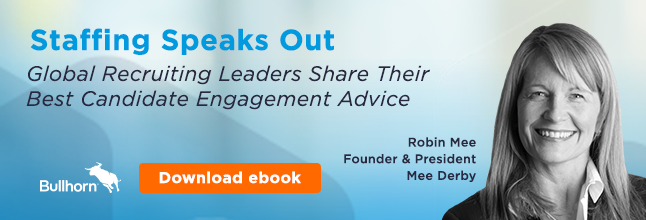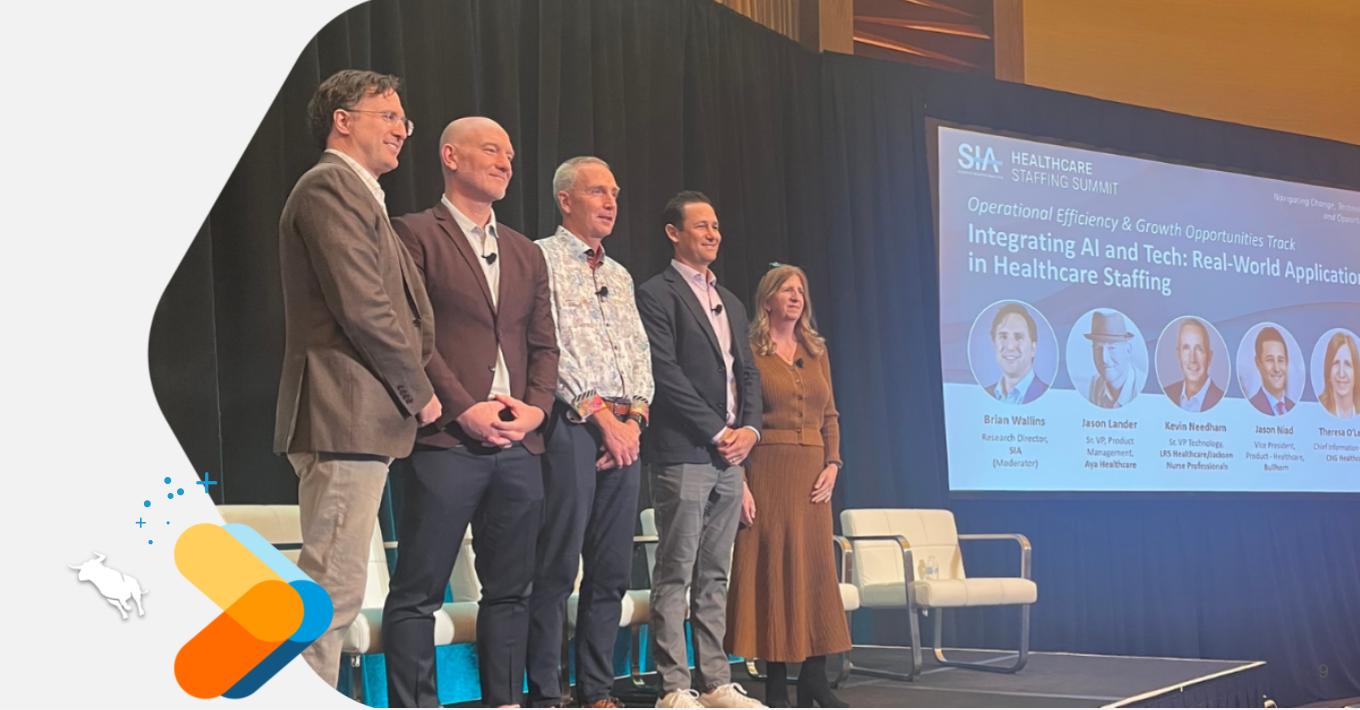Ask a Staffing Leader—5 Questions with Robin Mee

In today’s age, it’s not too difficult to find advice on any subject. Advice you can trust from a qualified expert in the subject?—now that’s a tall order. That’s why we’re thrilled to introduce our new series: Ask A Staffing Leader. We’ve assembled a group of the staffing industry’s most prominent thought leaders and experts, and picked their brain on some of the most pressing issues facing staffing firms in 2017.
Today’s expert—Robin Mee, founder and president of Mee Derby, and one of the many great speakers at Engage 2017!

Staffing firms cited the talent shortage as the number one challenge in the 2017 staffing and recruiting trends report. How does the talent shortage impact the way staffing firms should approach candidate engagement? What steps can staffing firms take to win candidates for difficult-to-place positions?
There’s a talent shortage both for internal candidates and for the candidates you place on assignment. Candidate engagement is critical for both. The fundamentals of an effective candidate engagement strategy apply to both types of candidates and their unique needs.
There are four essential steps involved in creating a sustainable candidate engagement strategy that works for your firm. First, you must identify your demographic and specialty. This includes understanding your target candidates and their specific needs. Next, you need to ensure that your company is taking the steps to attract your target audience. You do this by defining your company’s values and principles, and communicating them deliberately and clearly. Finally, you need to create a world-class marketing initiative to engage your target populations and to ensure that your message reaches them.
What is stopping most staffing firms from becoming more efficient? What actions should they take to correct this?
Staffing firms need to commit to a solid recruiting strategy. Sales has been “king” for so long in staffing, but the role of recruiting has never been more important. It seems like a lot of staffing firms rely on a “posting and praying” method of recruitment versus executing on a specific recruiting strategy.
Here’s an overview of a strong recruiting strategy:
1) Hire a Chief People Officer to drive company-wide recruiting strategy for both internal and external hires
2) Create a corporate recruiting organization to execute on internal hires—even if it’s just one person
3) Create a much more friendly work-life balance that includes virtual officing (for internal hires)
4) Build a solid internal training organization for new internal hires
5) Develop internship and management training programs to attract new talent into the industry
What’s a common misconception about winning new business? What are staffing firms overlooking in their current approach to winning business?
A common misconception is that new business is the magic bullet. People underestimate that the real opportunity exists in expanding existing relationships. Both are important, but focusing on enhanced customer experiences might be a better investment. Just like the cost associated with losing an employee, the cost of replacing an existing business relationship is high in both hard and soft dollars.
What will be the greatest challenge staffing firms face in the next five years? What will be key to overcoming this challenge?
The greatest challenge will be to stay relevant. Hiring and talent shortages are projected to remain top priorities, but we don’t have a crystal ball. How might pricing models change? Will technological advancements change the dynamic between buyers and suppliers in search—which is my area of staffing—like it has with contract staffing using VMS/MSP? Search, while enhanced and supported by technology, is still a “people” business driven by relationships. Will that change? I hope not.
To overcome this challenge:
1) Stay informed. Leaders must educate themselves and their teams so everybody makes good strategic decisions for the organization and so that we stay ahead of the curve.
2) Make key investments in people and technology
We stayed ahead of the curve with Bullhorn and LinkedIn. In 2002, we became one of Bullhorn’s first 10 customers. In hindsight, it was a great decision—one of my best business decisions ever. LinkedIn is another example of an early investment that pays regular dividends, as now 60% of our annual placements come from new contacts on LinkedIn.
How can staffing leaders be innovative in the current landscape? What examples of innovation in staffing have you seen?
I am sure that technology is the answer, but it’s difficult to say which technology enhancements are going to be the game changers. Over the course of my career, the core function of recruiting has essentially not changed—we’re matching up people with jobs—but the tools and the strategy have evolved. We are a small company so it is all the more important to make good investments. Technology is a critically important area, and it’s essential to be smart with both time and money.
Online staffing platforms like Upwork are some of the more innovative evolutions happening in staffing. The gig economy conversation is coming into its own and needs to be watched. It’s important to stay up to date on the conversation as leaders in the industry, like Carl Camden, CEO of Kelly Services, continue to discuss the ramifications and possibilities on the horizon.
Want more great insights from Robin Mee and other staffing leaders? Check out the new ebook, Staffing Speaks Out: Global Recruiting Leaders Share Their Best Candidate Engagement Advice.









